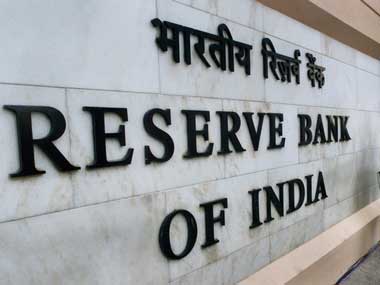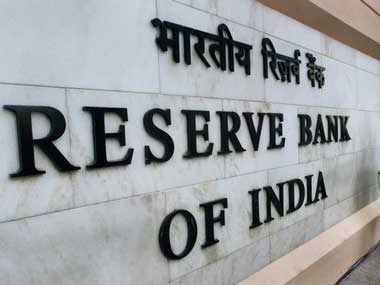The Reserve Bank will announce its credit policy in a matter of hours. Ninety percent of the market is expecting the governor will cut the repo rate by at least 25 basis points, according to a CNBC TV18 poll. The same poll saw 30% of the respondents saying “yes” for a CRR cut and 10% said no action. In effect 30% were expecting a CRR and a repo cut.
The arguments in favor of a rate cut have gathered steam after the core inflation fell to 3.8% in February. That’s lower than the historical trend for core inflation. Anecdotal evidence from sectors like automobiles indicate a severe fall in demand. So perhaps the Reserve Bank must cut.
But in this chorus of rate cuts a couple of factors need to be noted. Going by the Consumer price inflation, the average and the below average Indian is still suffering a 10% inflation. By the standards of a large majority of Indians, real rates are still negative. No doubt the average bank is unable to elicit deposits below 9%. Hence a cut in repo rates cannot be passed on with a cut in deposit rates immediately and banks won’t cut lending rates till they can cut deposit rates. Some bankers argue that deposit rates are traditionally high in March because corporates withdraw their deposits and these need to be replaced.
Additionally in the past year, finance ministry shed its old habit of setting banks’ deposit and balancesheet targets. They have wisely begun concentrating on margins and have hence frowned upon high cost deposits and certificates of deposits (CDs). Bankers are therefore redeeming their high cost corproate deposits and CDs and replacing them with retail deposits. In the process they have tended to pay a little more for retail deposits but they still save much more by shedding high cost bulk deposits. These bankers say a repo cut will be passed on but may be by mid April.
[caption id=“attachment_666314” align=“alignleft” width=“380”] Most important argument against a rate cut is the government’s unwillingness last Friday to go ahead with the scheduled 45 paise diesel price hike.Reuters[/caption]
Most important argument against a rate cut is the government’s unwillingness last Friday to go ahead with the scheduled 45 paise diesel price hike.Reuters[/caption]
Scratch them a little more and all the bankers come clean that deposits may be difficult to gather if they were to cut rates below 8.5 or 8% The SBI chairman blames this on inflation expectations.If his diagnosis is right then the RBI better be warned. The message from the citizenry is that even if the central bank is willing to cut rates, bankers may not be able to pass on more than a half a percentage point cut in deposit rates this year, since below that level it will start hurting deposit volumes.
But the most important argument against a rate cut is the government’s unwillingness last Friday to go ahead with the scheduled 45 paise diesel price hike. The fiscal deficit of 4.8% is crucially dependent on the govt cutting its oil subsidy. Even if 45 paise were cut every month in FY14, the average per annum fall in diesel prices will be only Rs 2.75 per litre. If the government drags its feet now, fourteen months before the elections, will it deliver closer to elections? The RBI believed the government’s promise and gave rate cuts in April last, only to see the government show no nerve to tackle the deficit up until September. The resultant impact on current account deficit and on inflation is for all to see. The govt has probably reassured the RBI that it will keep its word on diesel prices after the Parliament session ends. But this delay of scheduled minor hikes puts question marks on the government’s intent to cut subsidies to 2% of GDP this year.
There is a widespread misconception being circulated that the current account deficit is high only because of gold. This is true of 2011-12. But in Q2 of FY13 - i.e. for the quarter ended Sept 30 2012 - gold imports formed only 0.3% of the GDP. So India’s current account deficit for Q2 would have been 5.1% instead of 5.4%, if no gold had been imported in that quarter. That’s the point then. India’s biggest import component is oil and unless people are made to pay the right price for diesel, neither will wasteful consumption stop, nor will crude imports come down and nor will the current account deficit.
The government’s intransigence on diesel prices should therefore be highlighted by the RBI. They may still give a cut, but they must express dissatisfaction over the refusal of the government to keep its word that diesel prices will be hiked every month. And to extract good behaviour from the government, the central bank can, and may be, should refuse to cut rates. They can always return to cutting rates, when the government keeps its word on subsidies.
However, I suspect the RBI is going to choose to look the other way on fuel price hikes and go ahead and “reward the govt for its fiscal “responsibility” and to give some much needed boost to sentiment. One hopes that central banks won’t have to regret this decision as it had to do in April last year.
Latha Venkatesh is the Banking and Commodities Editor at CNBC TV-18. As a key anchor with the channel, Latha is a keen observer of the monetary policy space. She has kept close watch on the Reserve Bank of India’s policy formulations and developments in the banking industry. She also tracks money market and macroeconomic trends
)